In recent weeks, we’ve brought you an exclusive look at an early workprint copy of “The Child“, with additional scenes, missing music, and several unfinished visual effects shots. The deleted scenes are certainly an exciting aspect of the original workprints, but we’re also fascinated by the insight they offer into the Star Trek: The Next Generation production process. We’re taking a deeper look at the missing visual effects with an exclusive before-and-after video comparison, along with a scene-by-scene breakdown which details the technical processes used to complete each VFX scene!
We have used four separate versions of “The Child” in this presentation: the “1st Cut” workprint, dated October 6, 1988; a second workprint – dated October 24, 1988 – which is virtually identical to the final broadcast version of the episode; the 2002 DVD release of Season Two; and the second season Blu-ray set which CBS released in December 2012.
| 1988 Workprint |
2012 Blu-ray |
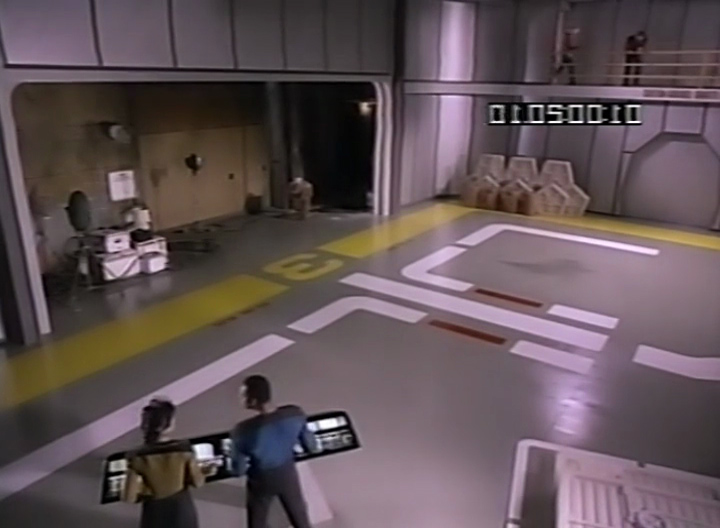 |
 |
|
TEASER, SCENE 1A: A great look at the original 35mm plate photography, filmed on Stage 9 at Paramount Studios. Here you can see the interior north wall of Stage 9, with unused studio lights and other equipment stored behind the exterior shuttlebay door. Because no actors or objects pass in front of this area, no bluescreen was necessary to film this scene.
In both the DVD and Blu-ray versions of the completed shot, the shuttle miniature – which was filmed separately at Image G – has been composited onto the plate along with its various lighting passes and shadow elements, along with the blue containment field. If you look closely, you can still barely make out a reflection from an equipment case in the yellow stripe area of the shuttlebay floor.
|
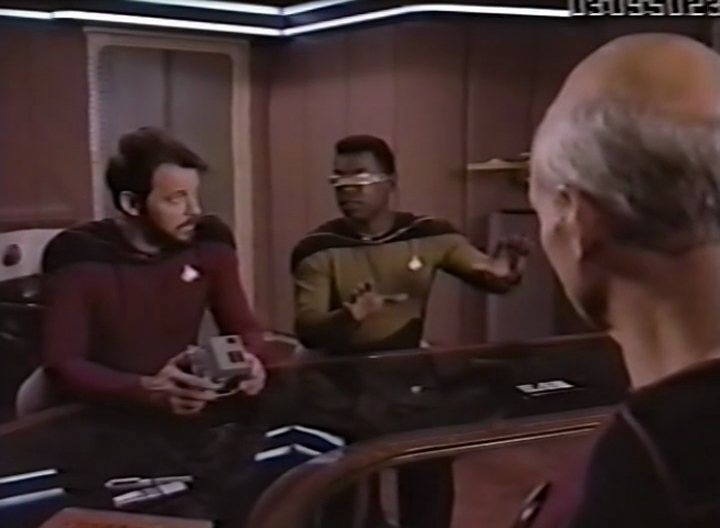 |
 |
|
TEASER, SCENE 4: The semi-transparent CG animation of the containment unit used in the original 1988 standard-definition broadcast was replaced by new, high-definition CG animation with different lighting, and was composited into the scene at full opacity, eliminating the transparent look of the original.
Although it is hard to see here, the new animation includes a corrected LCARS display which better matches the full size prop seen later in the cargo bay set. As in the original broadcast, the CG effect is accompanied by a blue ring representing the holoprojector along with a simulated reflection on the surface of the table.
|
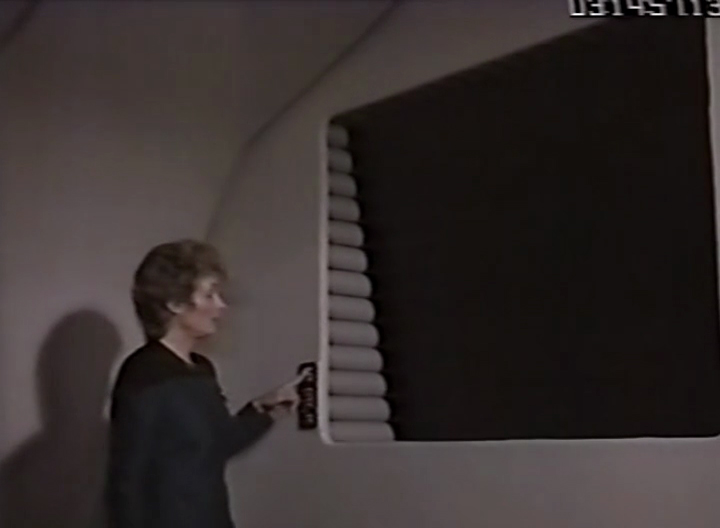 |
 |
|
ACT ONE, SCENE 27: While Workprint 1 just shows the blank on-set photography, a simple still image of an embryo was put in place on Workprint 2 for use as a placeholder for the post-production work. The LCARS graphic designed for the Blu-ray matches very closely to the original 1988 version, including using the original footage of the embryo, significantly desaturated.
The 2012 compositor, however, still seems to have had trouble correcting for the perspective and part of the graphic very slightly intrudes onto the wall on the right side of the display.
|
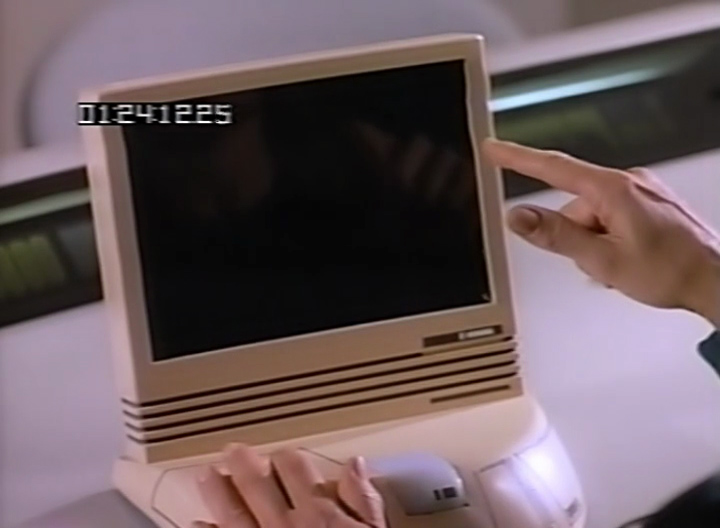 |
 |
|
ACT THREE, SCENE 51: The blank screen of the cream-colored sickbay office monitor has an LCARS graphic composited on top of it. The 1988 version has some noticeable signal aliasing or chroma noise on the text. Also known as color crosstalk or rainbow effects, they are caused by poor separation between the luma and chroma components of a composite (analog) video signal.
The 2012 version, in addition to being digital and high definition, is very faithful except for the change of color from a grayish green to purple. Diana Muldaur is careful not to let her finger pass over the display area, to avoid adding an unneeded complication to the compositing process.
|
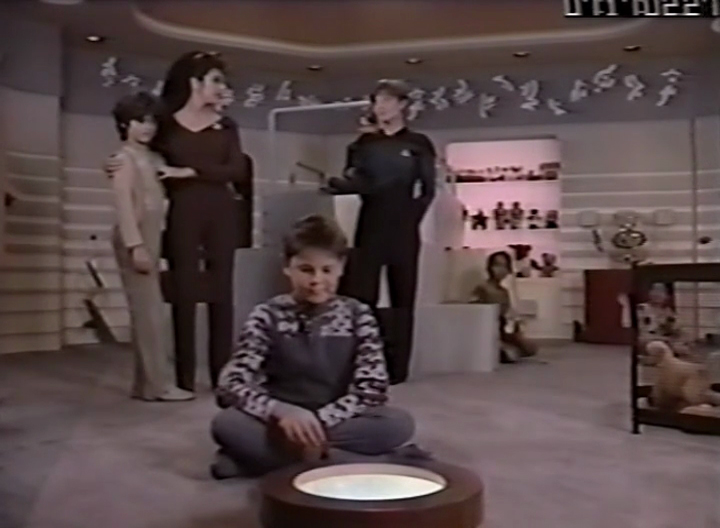 |
 |
|
ACT THREE, SCENE 52: The three-dimensional shapes are faithfully recreated with higher resolution CGI and a more feathered and integrated look, which replaces the hard, aliased edges of the 1988 original animation. A volumetric glow of light has also been added to the holographic base.
|
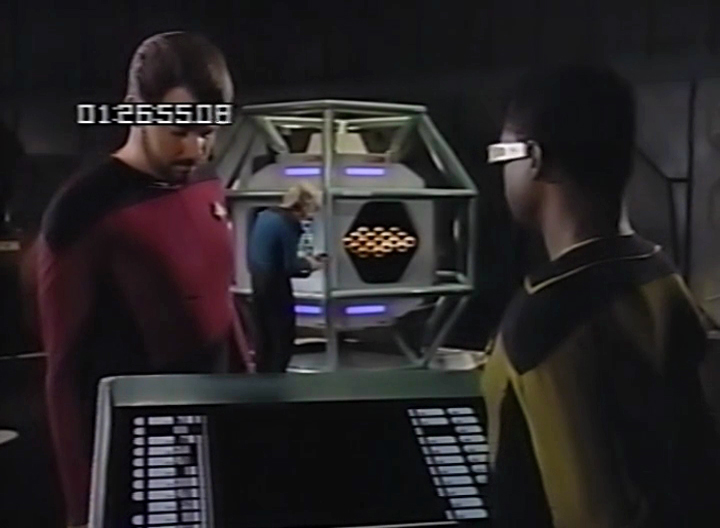 |
 |
|
ACT THREE, SCENE 56: The new console CG animation of the containment modules beaming-in is composited over the shot. Note the mismatched black level in the original broadcast composite — the darker black level of the animation doesn’t match very well with the lighter footage. This is corrected in the 2012 version.
|
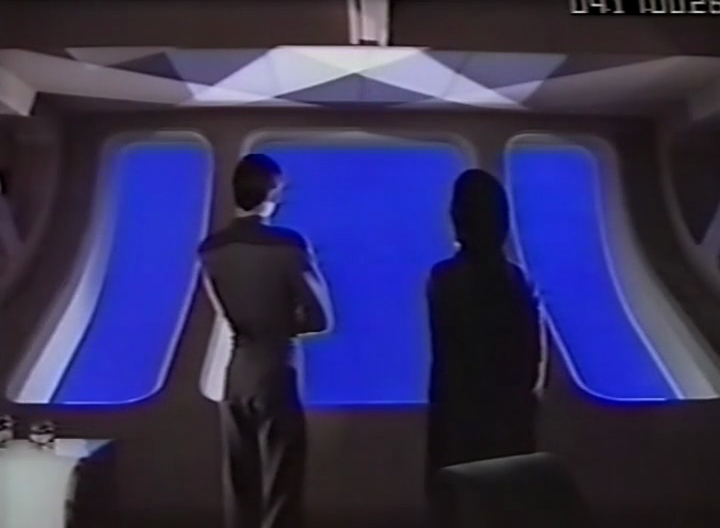 |
 |
|
ACT THREE, SCENE 65: Wil Wheaton and Whoopi Goldberg perform in front of bluescreen on the Ten Forward set, which will become the first ever “POV” shot of a ship jumping into warp speed. Watch the ceiling above the windows as an interactive, on-set lighting effect is timed to match the warp effect. In the final shot, these harsh shadows are removed for a more natural look.
This warp effect was accomplished using various types of streak photography, similar to what was used on Star Trek: The Motion Picture to create radial, rainbow-like streaks of stars during that film’s signature warp sequences.
|
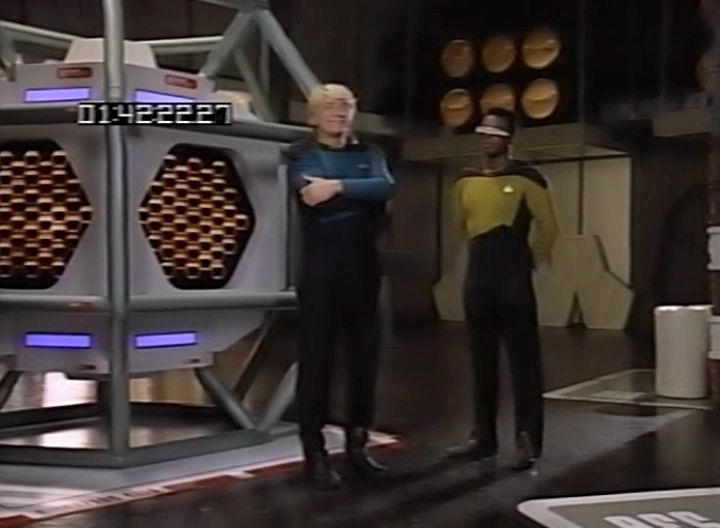 |
 |
|
ACT FIVE, SCENE 87: This is the standard transporter beam-out effect, which is made up of two plates: one with actor Seymour Cassel in place, and another of the empty set behind him. The two images are then cross-dissolved using a split-screen effect to keep LeVar Burton in the shot as the effect occurs in several layers.
An overall “shower” of streaks is wiped down over the actor, which then dissolves to a more confined version. A semi-transparent hold-out matte is created by an artist in the shape of the actor. This matte “holds-out” the background to allow the familiar shimmering points of light of the transporter effect to be seen just inside the body. Another dissolve and wipe reveals the final residual chest cavity layer which, in turn, is slowly dissolved away.
|

Stay tuned to TrekCore as we have several more workprint analyses to come, including a special look at the use of widescreen photography on The Next Generation! What do you think about the use of visual effects in “The Child”? Let us know in the comments below!
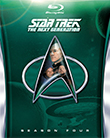 | Order Star Trek: The Next Generation Season 4 Blu-ray today!


 | 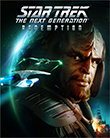 | Order TNG - "Redemption" Feature Blu-Ray today!
 |
![]()


















